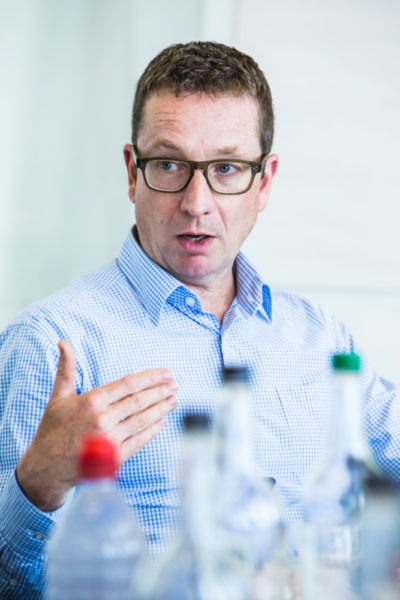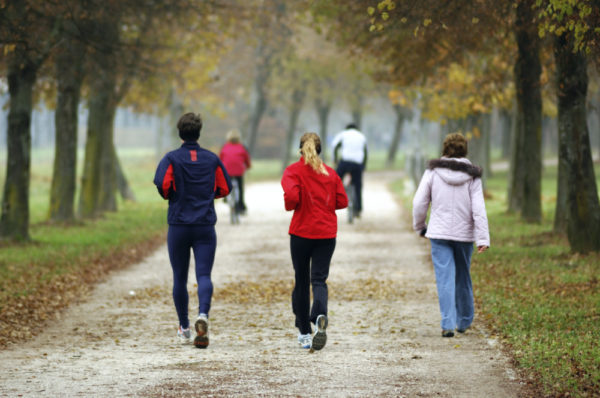Duncan Wood-Allum explains why there is no better time for local authorities to start taking a more strategic approach to planning their future sport, physical activity and leisure services.
Over the last five years in the midst of the most challenging financial cuts, there has been a great deal of learning across the sector and some local authorities have been having a big impact in the most difficult circumstances. Sport, physical activity and leisure services in some local authority areas have been playing their part in bringing positive change to places, communities and individuals. This has been achieved by making sound decisions based on clear objectives informed by sound insight and research.
 There is now a new appreciation of the contribution that sport and physical activity at a local level can make to the health and wellbeing of its citizens, particularly those less active communities by contributing to addressing some long standing inequalities.
There is now a new appreciation of the contribution that sport and physical activity at a local level can make to the health and wellbeing of its citizens, particularly those less active communities by contributing to addressing some long standing inequalities.
From our experience of the work we at SLC and others have been doing with core cities, numerous local authorities and their delivery partners, it is evident to us that the key to delivering successful outcomes is dependent on the ability to think and act strategically.
Where we have been working with organisations that are able to take the time to think carefully and in depth about what they want to do and how they want to support their communities. The outcome is always better than a knee-jerk response to an imminent procurement timetable or replacement leisure facility development.
Enlightened councils are asking what do they want to do for their citizens, where can they make the biggest impact, what outcomes do they need to achieve to improve life chances and health for their citizens in a sustainable way?
These are essential questions for a proper strategic approach and can, pragmatically, be intrinsically linked to budget pressures and the need to find a sustainable future solution.
Once you have answers to these questions and have assembled lead cross sector partners who have a stake in achieving some or all of the same outcomes, you can take the first step and develop a shared local strategic vision for sport and physical activity.
The next key step is developing insight. There is a real need to dig a lot deeper than the Active Lives Survey or general demographic, socio-economic information or the valuable data available through the Joint Strategic Needs Assessment (JSNA). There is an opportunity to get researchers out into the community, particularly into areas with groups which have traditionally been harder to engage, so they can talk to the local community leaders and those groups that often do not have a voice. They can find out what is really going on in these communities, what issues might be stopping someone becoming more active.
It is part of a process that is about recognising that physical activity could be as much about a pavement or a bit of greenspace outside your house or the fields next to the school. It is about working with the planners and developers to think about how we are going to get people to walk or cycle to where they want to be. It is about better approaches to design and infrastructure rather than putting in an outdoor gym as an afterthought.
The feedback from recent studies undertaken by SLC and national research from Sport England showed that some communities much prefer to use their own local spaces rather than a leisure centre. Many do not want typical exercise programmes, preferring something else in an environment that they can feel more comfortable in. Some barriers to physical activity are less obvious. They might include perception, confidence, motivation or even a building’s signage, look and feel; childcare is often a big issue.
Above all it is about listening to people and designing services for their needs instead of saying, “You need to fit into our box.” They are not going to do that and there is no reason why they should.
Having developed clear strategic objectives, this allows you to decide what can be done. You can consider what sort of things can be done better by the market, what provision will not be cost-effective and what services are not reaching the right people. There might be opportunities for supporting rather replicating groups and initiatives that are already out in the community.
The next step in the process is to consider how these interventions can be delivered sustainably. Are your leisure centres in the right place? If they are coming to the end of their natural life let’s not assume that they should be remodelled on the same site with same mix of pool, sports hall and gym.

Things could be different. Do you have the right mix of facilities? Are local halls and community centres better suited to playing a more proactive role in local people’s active lifestyles? Have you looked at your active infrastructure in terms of physical and social assets? What can you do to influence activities away from your buildings and get people to engage more with the outdoors?
This needs led approach involves moving away from thinking in terms of buildings and towards thinking in terms of physical and social assets in a place: what do we need to create the best possible environment for the whole community to be more active and how can the social infrastructure enable more activity to be supported?
We need to be able to persuade decision-makers that the fruits of a successful sport and physical activity service can be reinvested in the people and the interventions that make a real difference. Leisure buildings could be facilitating and funding an outreach service with regularly refreshed, revisited and retargeted interventions for the next ten or fifteen years. SLC has delivered a significant number of partnerships doing just that.
This is a prize that could become the reality for many councils but only if they are able to take a long-term strategic approach and are prepared to invest – as highlighted by my colleague Toby Kingsbury in his recent article on SLC’s blog ‘No investment – no future’.
There are numerous management and contractual models that can work – all of them need to be efficient and crucially, all need to be effective. Some myths and political parameters might need to be challenged to find an optimal approach.
If a local authority has the opportunity to secure effective and sustainable services for the community, why wouldn’t they?
This is the essence of the challenge:
- We cannot continue to do what we are doing – what we have always done – and expect the dial measuring participation and physical activity to start moving of its own accord
- We have to explore and understand local need to ensure future interventions are targeted at local strategic priorities
- We have to learn from what works, innovate and implement changes over a sensible period of time.
If we can do that, the real prize of a more active, healthy and happy community is within our grasp.
Duncan Wood-Allum is Managing Director of the Sport, Leisure and Culture Consultancy
The Sport Leisure and Culture Consultancy are advising a number of core cities and councils on their strategic planning of sport and physical activity services.
The Strategic Outcomes Planning Guidance has been written by Sport England with the support of the Sport, Leisure and Culture Consultancy.

